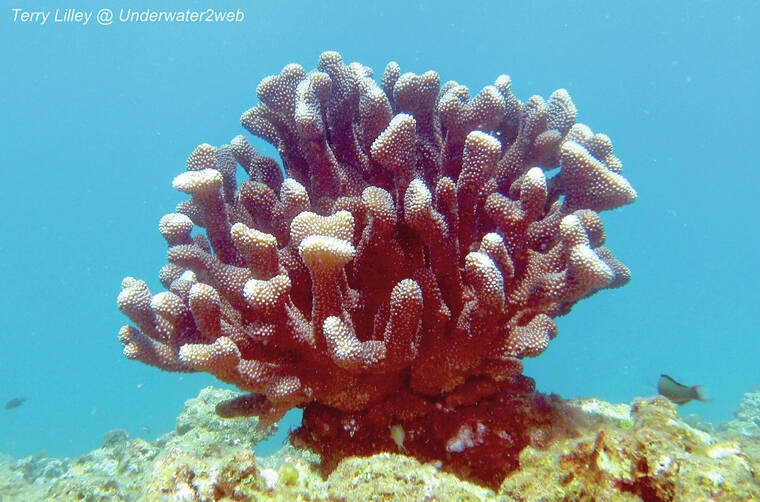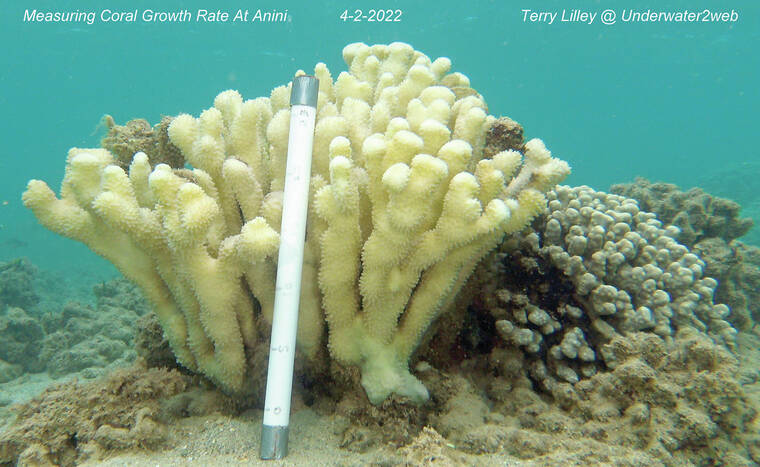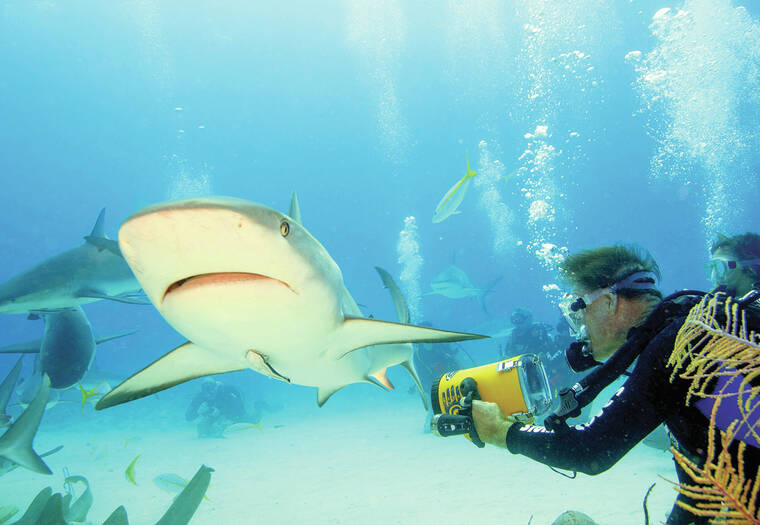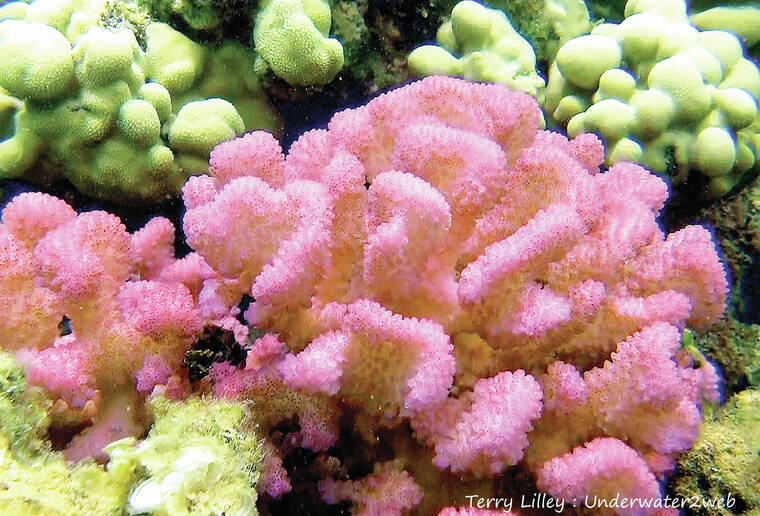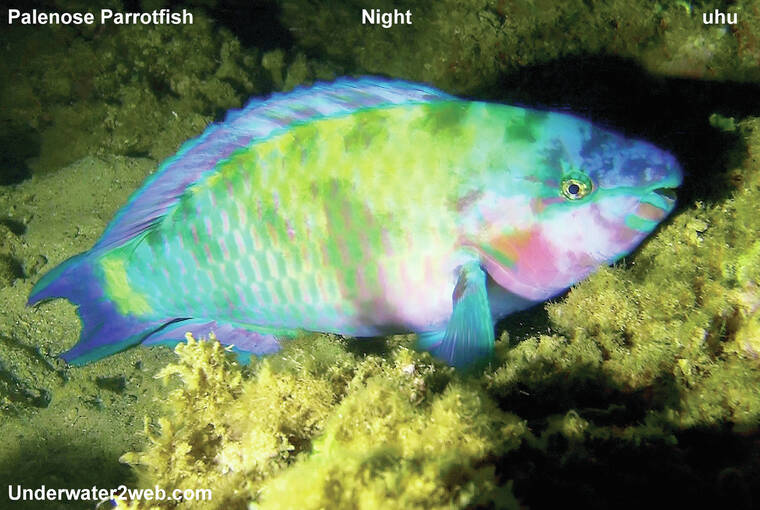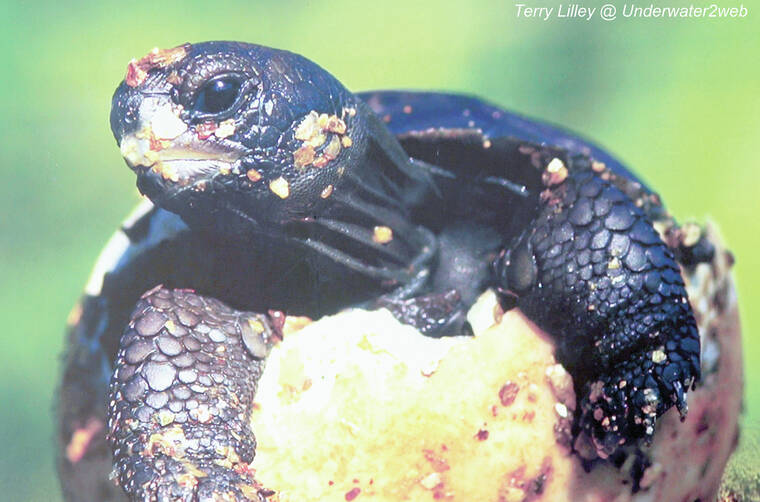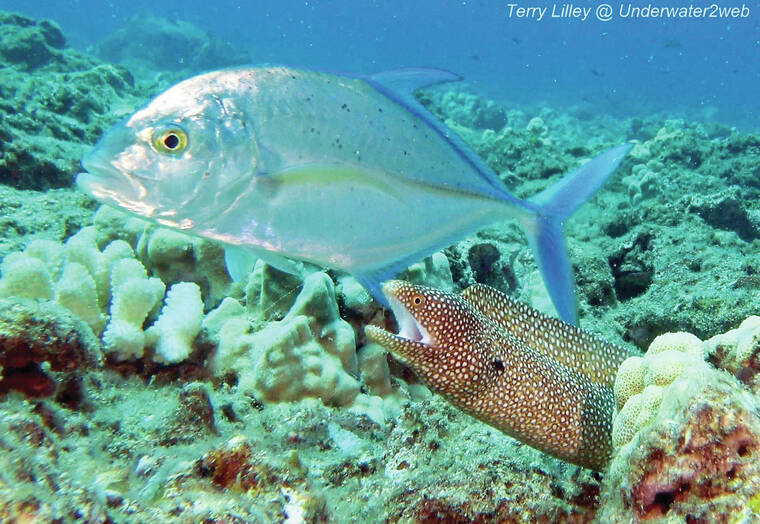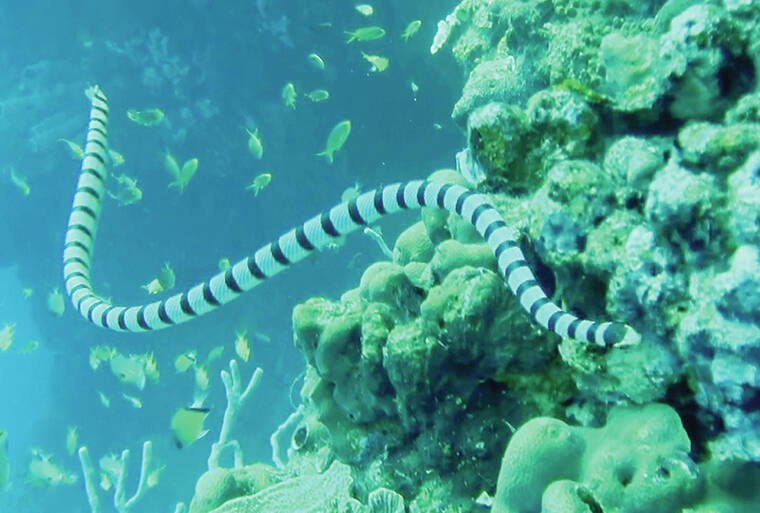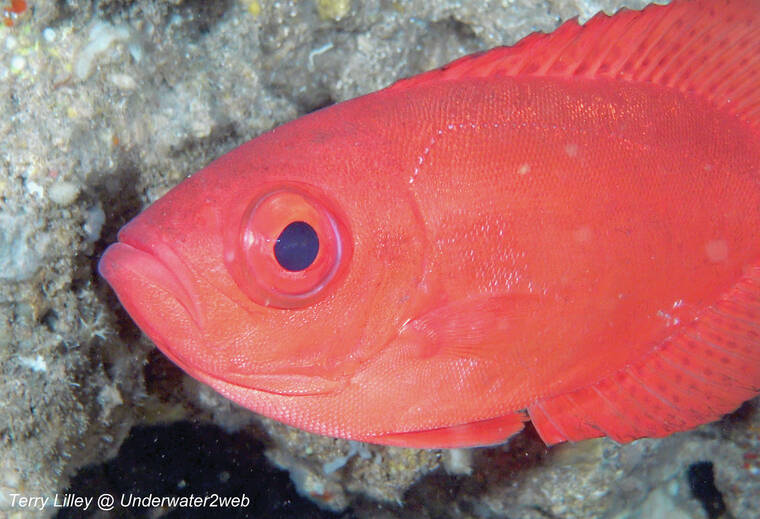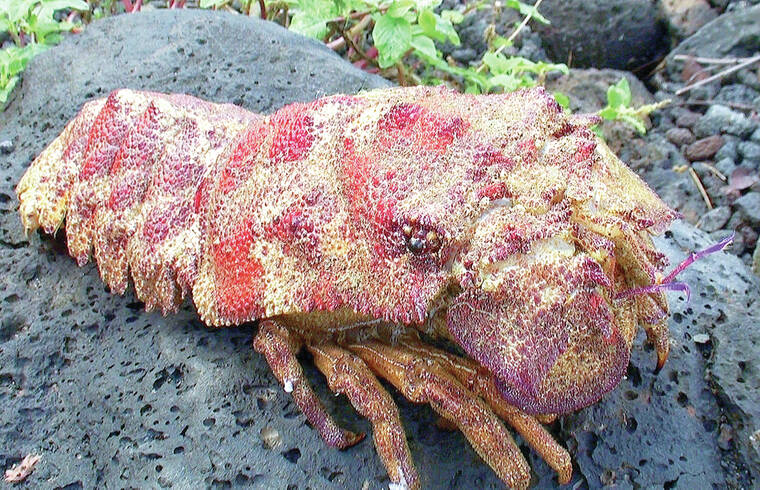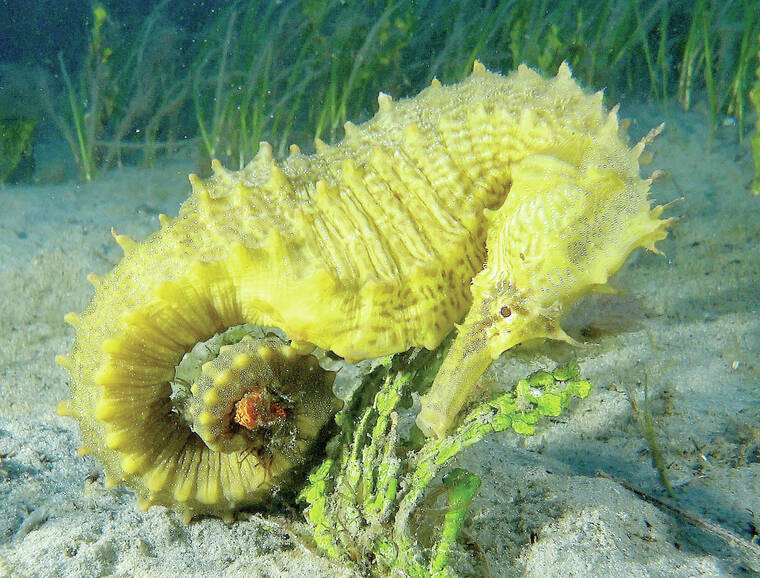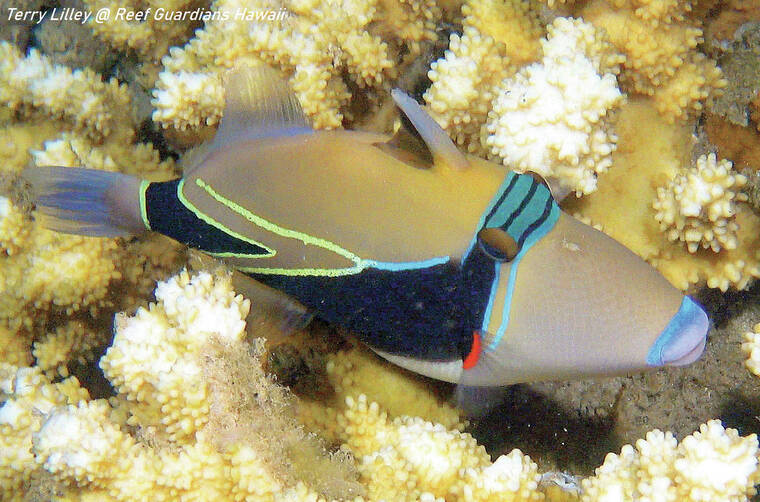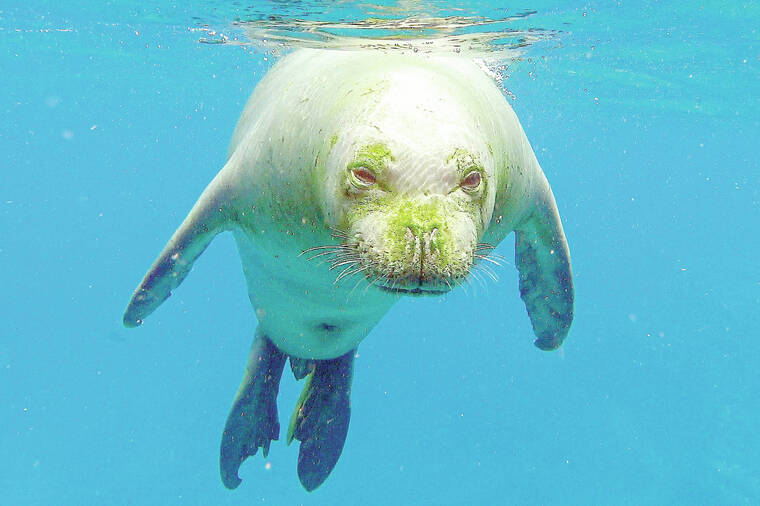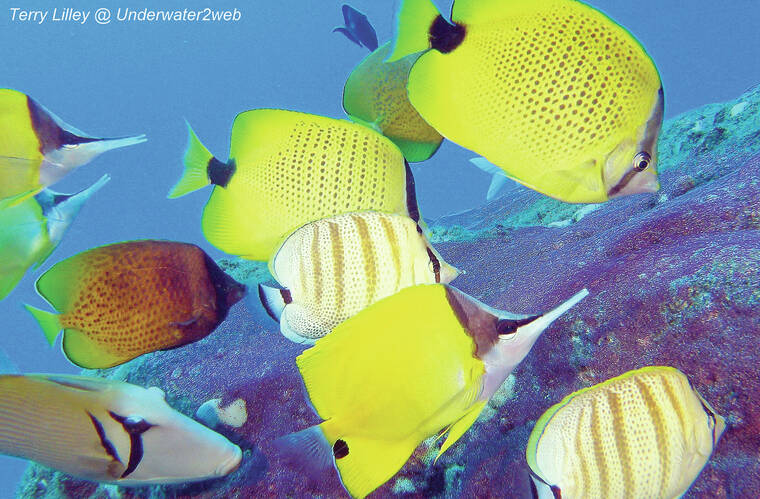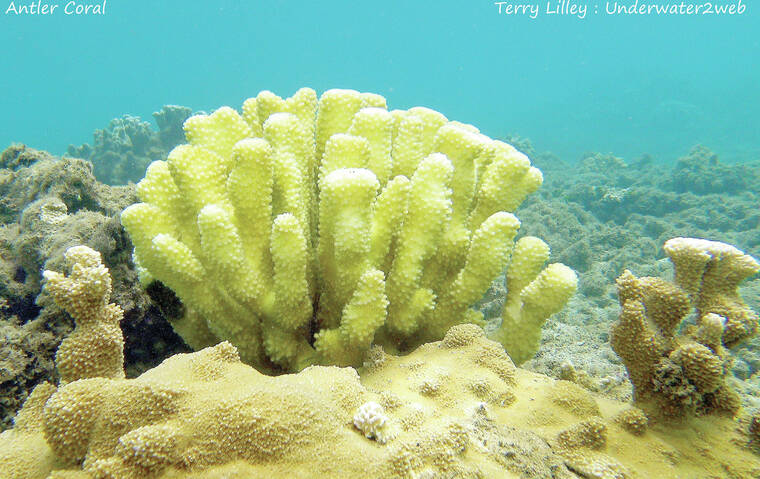CRITTER: Update on Hanalei coral growth since 2018 flooding
Hanalei Bay is a complex ecosystem due to all of the rain we get along with large surf and a huge wetland area.
CRITTER: Record coral growth recorded at Anini Beach
For the last five years myself and the Reef Guardians Hawai‘i nonprofit research team have taken over 500 kids in our Reef Camp out to see the beautiful yellow antler corals growing about 100 yards offshore from the boat ramp at Anini Beach.
CRITTER: Research shows that sharks do not eat people
The movie Jaws was the worst movie ever produced when it came to scaring the public about shark attacks and spreading misinformation about the oceans’ apex predators.
CRITTER: The story behind Hawai‘i corals and their colors
When we are out snorkeling here in Hawai‘i we all see hard stony coral that has different colors. Coral is made up of a hard calcium carbonate structure that is similar to the concrete we build condominiums out of on land. The hard calcium structure protects the soft clear coral polyps from being washed away in the surf much like a house on land protects soft bodied humans from washing away in a storm.
CRITTER: Uhu the parrotfish goes through sex change to reproduce
Seeing a large male parrotfish out on the reef is very exciting because they are so colorful with bright blue, green, purple,red and yellow markings. These large male breeders are called “super males” and they usually can be found along with four or five females that have a dull reddish reef color. At one time in their life the large adult males used to be females!
CRITTER: Disappearing beaches and sea turtle nests
A Category 5 hurricane hit the western end of the northwest Hawaiian Islands a few years back and the sea reclaimed several small coral atolls.
CRITTER: Nunu the sneaky reef hunter
Nunu the Hawaiian trumpet fish grows over 24 inches long, but it is only about 3 inches thick.
CRITTER: Invasive marine fish damage our coral reefs
Fish that evolved on our coral reefs here in Hawai‘i all have predators that may eat them but they recognize the predators and normally only the weak or old fish get eaten.
CRITTER: Omilu, the bluefin trevally, hunts with puhi the moray eel
Omilu, the bluefin trevally, gets quite large and is one of the top predator fish on the Hawaiian coral reef and it often hunts small fish along with puhi the moray eel.
CRITTER: Differences between sea snakes and sea eels
It was a beautiful calm day for a scuba dive and we took off with six divers aboard our small dive boat.
CRITTER: More jellyfish on our beaches lately due to Kona winds
Hawai‘i has more than 15 jellyfish species that float around our islands and sometimes show up on our beaches. The box jellyfish is a small stinging species that often shows up on our south side beaches and stings swimmers. Jellyfish alerts are common when the box jellies are spotted.
CRITTER: Help search for honu ‘ea the rare Hawaiian hawksbill turtle
The hawksbill sea turtles are very rare and critically endangered here in Hawai‘i. There are thought to be less than 300 adult breeding females in the entire Hawaiian Island chain and they swim from island to island so they are hard to track or count.
CRITTER: Light plays tricks on deep water red fish
Most fishermen here in Hawai‘i have caught red fish like the aweoweo, mempachi and kumu that live in caves near shore or deep water fish like the onaga and ehu. Have you ever wondered why all of these fish are bright red?
CRITTER: Meet ula papapa — the ridgeback slipper lobster
Scuba diving many years ago at 80 feet deep off Kaua‘i south shore we found a huge lobster just sitting on the bottom in the open that looked like a rock!
CRITTER: Seahorse romance and pregnant dads
We have native seahorses here in Hawai‘i but they are quite rare, but in other Pacific islands like the Philippines they are super common. I always wondered why, but after learning how they mate and produce offspring I now understand why we rarely see them in Hawaiian waters.
CRITTER: Understanding origin of humuhumu-nukunuku-a-pua‘a name
As a marine biologist studying Hawaiian reef fish all throughout the Hawaiian chain I like how the Hawaiian people have named their fish species! The Hawaiian name has a meaning which often describes how the fish looks, its behavior and or its connection to land animals and plants. To better understand each fish species it is good to understand its Hawaiian name but that can sometimes be difficult.
CRITTTER: Hawaiian fish that ride waves
Hawai‘i is a very special group of islands because we are in the middle of the sea and lack barrier reefs.
CRITTER: Tunnels reef sharks, monk seals and divers
Tunnels reef on the north shore of Kaua‘i is very unique as it is a sunken volcanic caldera that is part on land and part in the sea. On the outside edge of the old volcano are lava tubes which were formed from giant gas bubbles when the volcano came to life millions of years ago. Today these underwater lava tubes are habitat for several shark species, monk seals and us divers so we all have to get along together in a one of a kind relationship!
CRITTER: Kikakapu the butterfly fish, chasing a monk seal
When I first started scuba diving many years ago in Kaua‘i I noticed large schools of kikakapu (butterflyfish) following me around while diving. I was thrilled to have this happen but very confused as butterflyfish usually feed on sick or dying coral polyps so why are they following me around.
CRITTER: Hawaiian corals are nature’s sea wall
Have you noticed lately that there are a lot of beach erosion articles in the newspapers here in Hawai‘i? Almost everyday the news covers a story about a house or road falling into the sea or onto the beach. These articles usually talk about “climate change” and rising sea levels as the causes for massive coastal erosion but most of the time the articles miss one of the main causes of our beach erosion problems!

